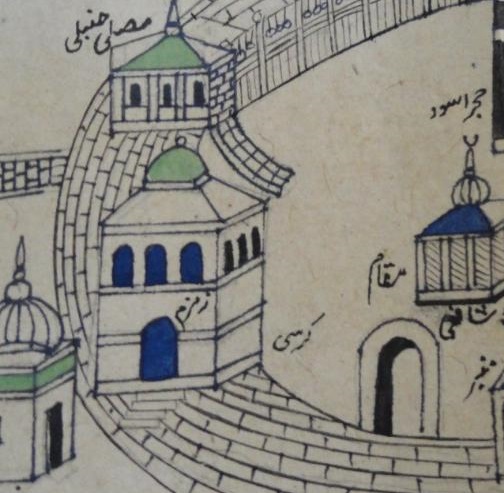FWP:
SETS == FILL-IN; GESTURES
ISLAMIC: {10,2}
NIGHT/DAY: {1,2}
WINE: {49,1}
Here's a verse in which two actions-- in effect, two uninterpreted 'gestures'-- are reported. Tone is everything-- and yet, what is the tone? We're left to assign one for ourselves. The commentators quite plausibly choose a rakish [rindānah] one: the tone of bravado, of a self-consciously wild-and-crazy schoolboy prank ('You should have seen what we did last night-- we got drunk and went to the Cathedral and poured a bottle of wine into the holy-water font!'). But that's far from exhausting the possibilities.
The verse reports two scenes. The first has four elements: night, wine, drinking, and the famous well of Zamzam in the precincts of the Ka'bah; on the basis of the second line, we also assume the presence of one more element: a pilgrimage robe. The second scene has three elements: daybreak, a stained pilgrimage robe, and the washing of the robe; on the basis of the first line, we assume the presence of one more as well: Zamzam. It's easy to draw up a number of contrasting pairs: night vs. day; the sacred requirements of the pilgrimage setting vs. the impure act of wine-drinking; (impure) wine vs. (pure, sacred) Zamzam water; drinking vs. washing; a 'pure' and clean pilgrimage robe vs. a wine-stained one; a wine-stained pilgrimage robe vs. a washed one.
The most complex sequence is that of the initially 'pure' pilgrimage robe, which then becomes a wine-stained one, which then becomes a washed one-- and one washed in Zamzam water! What in the world are we to make of that provocative sequence? Here are some possible readings:
=The washing (in Zamzam water) is a true ritual cleansing, so that the robe and its wearer are re-purified, and the pilgrimage can continue.
=The 'washing' is a tongue-in-cheek joke or mockery, and demonstrates the wearer's rakish disdain for mere external pilgrimage rituals.
=The washing is a mere ordinary washing: the speaker notices that his clothes are stained, so since he's beside a well, he washes them; he reports this to us matter-of-factly, as part of a chronicle of events.
=The whole sequence of events is an abstract Sufistic allegory, conveying truths about mystical experience and the primacy of the 'inner' [bāt̤in] over the 'outer' [z̤āhir].
The drinking of wine at such a maximally pure place and time is such a major defiance of all religious rules! Yet it seems to be accommodated with matter-of-fact ease-- within the small space of the one line that reports it. Beyond that, we have no larger context whatsoever. Does the speaker really succeed in 'washing out', either literally or metaphorically, those spots in his pilgrimage robe? Does he, in short, get by with it? And if so, what exactly is the 'it' that he gets by with? Obviously, Ghalib meant for different readers to react variously to this verse, according to their own views and perceptions.
Compare the divan's other 'Zamzam' verse, {232,6}.
In this anonymous drawing of the precincts of the Ka'bah, the well of Zamzam is located in the building with the blue windows and door (click on the image for the full drawing):

Nazm:
That is, rāt ko pī . To omit ko is now not in the idiom, but in the author's early years they used it without ko in both Delhi and Lucknow. Nasikh says, [an example]. (203)
== Nazm page 203